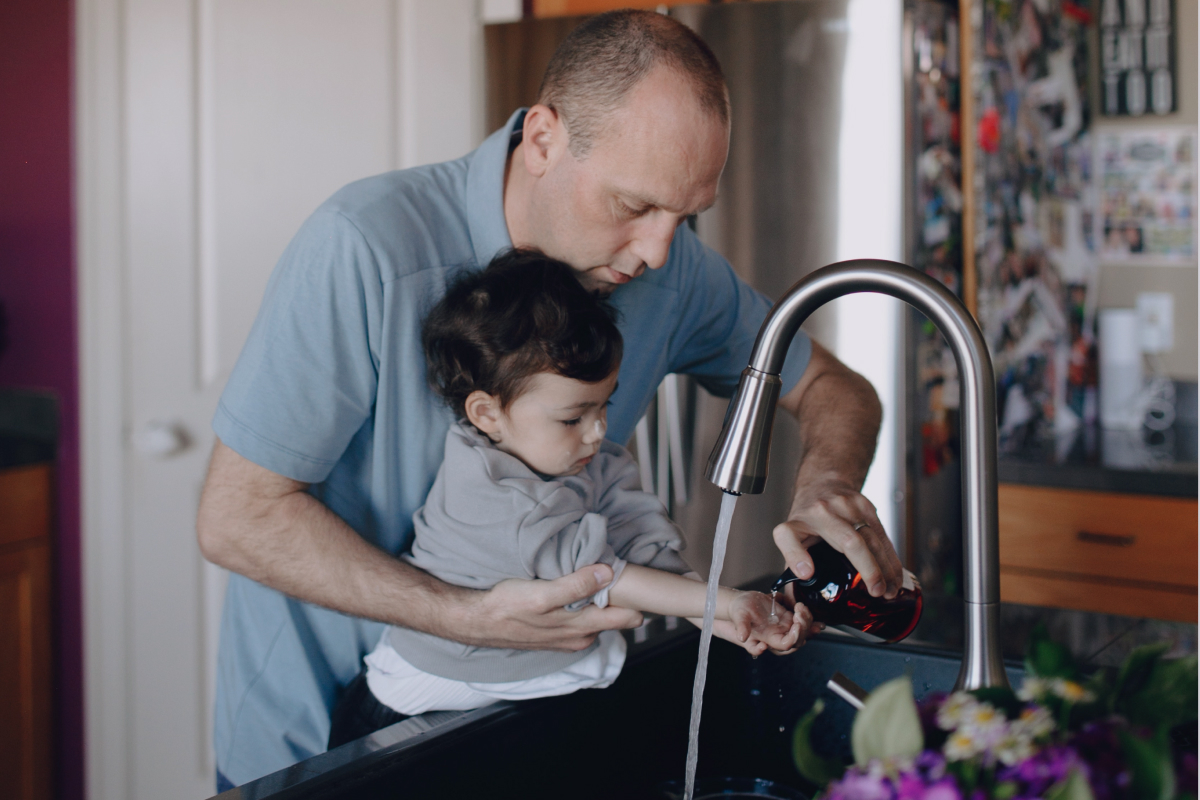Australian attitudes towards gender roles relating to parenting and paid work are becoming more progressive according to the 2018 statistical report of the Household, Income and Labour Dynamics in Australia (HILDA)^ survey, released last month by the University of Melbourne. Additionally, women are participating more in paid employment and spending less time on domestic duties overall.
While it’s encouraging to see views on traditional gender roles shifting, the distribution of unpaid domestic duties between Australian men and women remains unbalanced, with women spending more time than men on unpaid work at home, particularly after the arrival of children.
Progressive conversations around gender equality are helping to bring these issues into the mainstream; changing public perceptions and policies for greater gender parity. But conversation is not the same as action. What more can we do to change our behaviour as quickly as our attitudes?
Behaviours are slowly changing
The HILDA longitudinal survey of over 17,000 people in over 9,000 Australian households offers a rich picture of lives evolving. The 2018 survey report indicates that there has been a substantial shift over the course of this century towards a greater acceptance of men playing a more active role in raising children, women contributing more to the labour market after becoming a mother, and paid child care for young children.
Alongside this movement away from traditional views, the behaviours of Australian men and women of working age (15 to 64) in daily life are also progressing. Compared to 2002, men are doing more household chores and women are doing less. In 2016 men spent 13.3 hours a week doing chores, up from 12.4 hours in 2002. And women were doing 22.8 hours a week in 2002, down to 20.4 hours in 2016.
Whilst this is a step in the right direction, shifts in behaviour are slow. According to report author Inga Lass*, ‘based on current trends, it will take another 30 years before both genders do the same amount of housework.’
The motherhood penalty
The imbalance in the division of labour in the home can be linked directly to the arrival of children.
Inga Lass explains, ‘Before the arrival of a child…men spend only slightly more time on employment than women (53 per cent of the total couple employment time), and women spend only slightly more time on housework (54 per cent of the total housework time)’.
Although there appears to be a comparatively equal division in the sum of hours worked (paid and at home) between partnered men and women in heterosexual couples, once the first child arrives, the distribution between paid employment, housework and care shifts considerably depending on gender.
After the birth of a first child, women tend to withdraw from the workforce to focus on full-time care. Women’s share of paid employment decreases from 37% one year prior to the birth of a child, to 14% in the following year. At the same time, a woman’s share of household duties increases to 72% of care and 64% of housework.
Men, on the other hand, tend to withdraw from the housework and care whilst maintaining paid employment.
Interestingly, the divide in distribution of household duties that opens up between men and women after the arrival of a child persists as children advance through school and beyond.
Perception of fairness
Unsurprisingly, the report shows that men are more satisfied with the division of unpaid labour than women, with men’s satisfaction with household duties being highest in the year after the first child’s birth. On the other hand, ‘women’s satisfaction with the division of housework and child care drops markedly after the birth of the first child and continues to decline until the child is five years old,’ observes Inga Lass.
Additionally, 55.6% of fathers stated that they do their fair share of household duties and 65% believe they do their fair share of care for children under 15 years of age.
This is in contrast to a mother’s perception of fairness in the division of household chores, which indicates that 32.1% of mothers believe they do exactly their fair share, while over 35% of mothers believe they do much more. When looking at child care, two thirds, or 65.1%, of mothers say they do either a little or much more than their fair share.
Speeding up action
While there’s still plenty of work to be done to bridge the divide between the distribution of domestic duties among men and women, we should not underestimate the fact that Australians overall are becoming more open to non-traditional gender arrangements.
This shift in attitude is an important step to changing social norms, with women’s rising participation in paid employment impacting heavily. Similarly, if greater numbers of men undertake parental leave and generally adopt a more hands-on role in the home, this can only lead to a breakdown of stigmas and acceleration of progressive change.
What we’ve witnessed at Circle In are fathers who take parental leave often learn valuable lessons of empathy and inclusivity that may not necessarily be learnt in the professional workplace. Powerfully, these experiences have the ability to drive gender equality at work, which in turn motivates gender parity in the home.
So, despite current trends indicating we must wait 30 years for the distribution of domestic duties among the genders to balance out, what’s stopping us from driving swifter progress? Let’s try broadening our approach to more vigorously help men step away from traditional gender roles, with a view to achieving gender equality in the workplace and the home sooner than expected.







